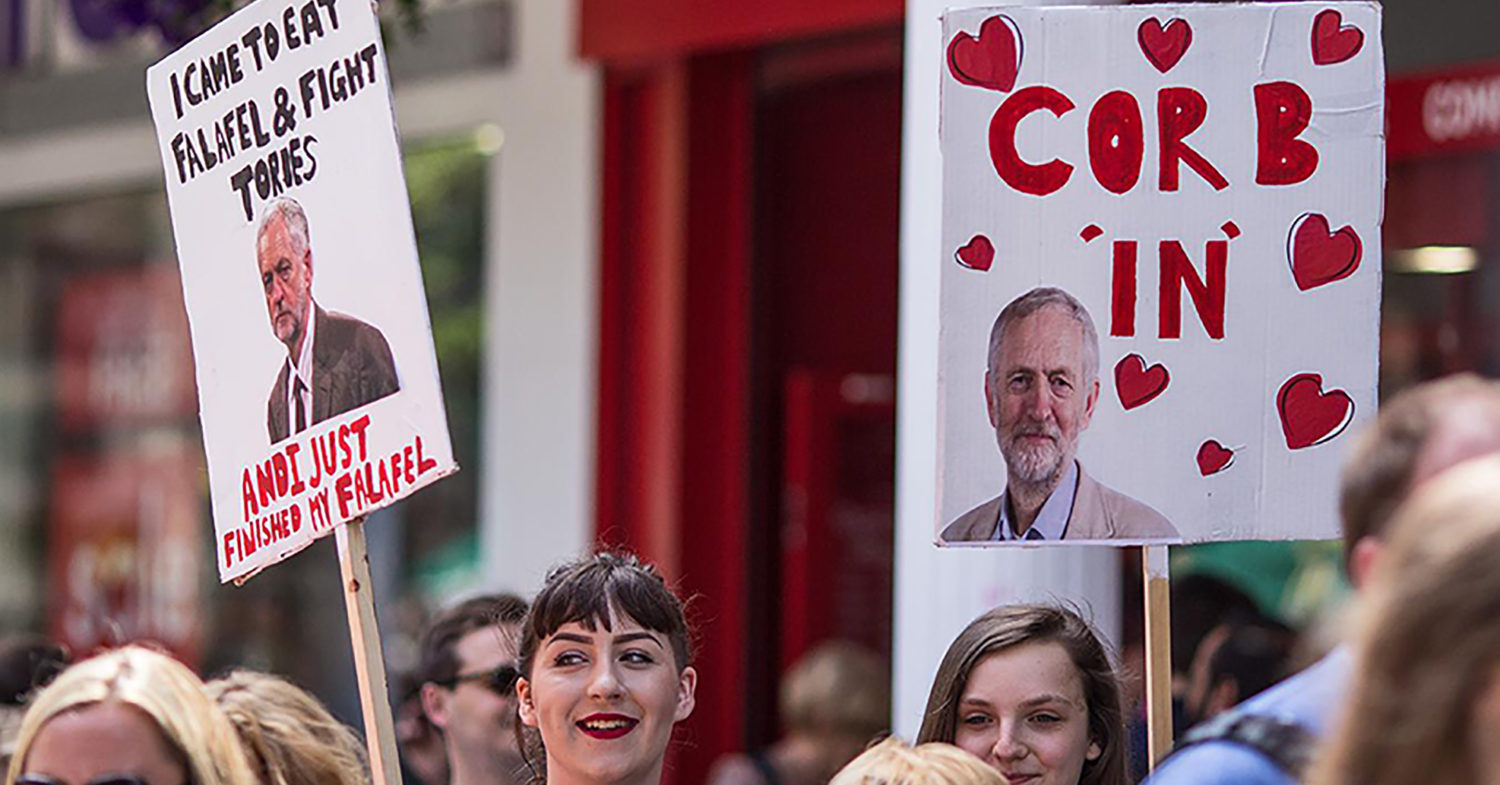Turning left
The shift leftwards among younger people is an international phenomenon. Keir Milburn explores the reasons why.
If you took a trip to the newsstands in mid-February this year you might have glimpsed the phrase ‘The Rise of Millennial Socialism’ emblazoned across the front cover of the centre-right Economist magazine. Coinciding with a prominent article on UK ‘millennial socialists’ in the New York Times, it revealed a growing acceptance by the centre and the right, despite early attempts at denial, of one of the most remarkable political phenomena of the last few years; young people’s dramatic turn to the left. Yet, while the general trend has now been recognised, its dimensions and political implications are poorly understood.
Discussion in the UK was sparked by the stark age divide in voting at the 2017 general election. For every 10 years older a voter was, they were every nine percentage points more likely to vote Conservative. The political generation gap revealed was indeed astounding.
Yet the timing of the Economist front cover was provoked by political events on a different continent. In the United States 28-year-old Alexandria Ocasio-Cortez has had a dramatic impact on political debate since her election to congress last year. Most recently Ocasio-Cortez, more than anyone else, has pushed the idea of a Green New Deal to the front of US political discussion. Support for those policies, which aim to achieve net-zero greenhouse gas emissions through a fair and just transition in just ten years, is deeply segmented by age. The strongest backing comes from millennials – often defined as 18 to 37-year-olds – who exhibited 30 per cent net support, even when the associated costs of the policies were specifically highlighted. Testament to the impact that Ocasio-Cortez – and before her Bernie Sanders – has had is the finding of a poll last September, in which 48 per cent of Democrat-supporting millennials declared themselves either socialist or democratic socialist. This is unprecedented in US history.
The international dimensions of this political generation gap have profound implications for the discussion of Corbynism in the UK. Any explanation of the Corbyn phenomenon based on the characteristics of Corbyn as a person, the peculiarities of Labour party history, or specific policies in the Labour manifesto, such as suggesting that young people were bribed by the offer on tuition fees, are clearly inadequate.
If the geographic spread of the trend demands proper explanation, then so too does its near simultaneous emergence across different national contexts. The political generation gap opened up very quickly. The 2017 election saw a startling 97 percentage point gap in voting intention between youngest and oldest voters. At the 2010 general election that gap had been just 15 points. It is a sudden and dramatic shift that has been mirrored in polling on political attitudes: While research on youth attitudes before and immediately following the 2008 financial crisis showed harsher attitudes on welfare spending among the young than older cohorts, this has dramatically reversed in recent years. The latest iteration of the British Social Attitudes survey dates the beginning of this reversal to 2014 and concludes that in 2018: “On average, younger people appear to have more sympathetic attitudes than their older peers when it comes to topping up wages, are less concerned about the concept of welfare dependency, and are more concerned that cuts to welfare would damage people’s lives.”
It is not difficult to see why young people are disillusioned with the current situation. They have suffered an unprecedented decline in their living standards and prospects. In the UK, millennials are likely to be the first generation for hundreds of years who will earn less than the two generations who came before. This is not just a prediction. It is already evident.
By 2016, the average millennial working through their twenties had already earnt £8,000 less than the average of the preceding generation. The huge increase in house prices through the 1990s and 2000s were of benefit primarily to older cohorts.
Declining wages, which have hit the young more severely, along with post-crisis tightening of borrowing conditions, have put home ownership well out of reach of most young people. The result is a Generation Rent, who will spend an average of £44,000 more in real terms on housing in their twenties than the Baby Boomers did. To make matters worse, young people are taking on huge sums of student debt only to discover a chronic shortage in graduate-level jobs.
Some of these effects are the result of long-term trends. As conditions of work have become harsher over time, they have affected later cohorts more severely. Older generations were employed on better terms and conditions, retained better pension rights, and benefited from rising house prices that followed neoliberal reform of the housing market. Yet the situation has been massively accelerated by the economic crisis that began in 2007 and reached a peak in 2008. As a 2016 Resolution Foundation report explains, in the UK “all of the £2.7tn increase in aggregate wealth recorded since 2007 can be accounted for by the over-45s, with two-thirds accruing to the over-65s.” In contrast, wealth has fallen by around 10 per cent among those aged 16 to 34.
As asset prices have grown far faster than earnings, any increases in the wealth of working people have tended to come from these assets, primarily through home ownership, although pension funds invested in stocks have also played their role. In this way, the interests of older cohorts have become increasingly aligned with the performance of the financial sector. The predominant government response to the crisis of 2008 has been to lavish the financial sector with what is in effect an ocean of free money paid for by public spending cuts and wage restraints. As this has kept asset prices high, the older generations have benefited. It is therefore no wonder they are tending to vote for more of the same. But that does not mean all is rosy for the elderly.
For a start, a quarter of pensioners do not own their own home, while 1.6 million pensioners live in poverty. Even those who do own property have found themselves trapped. With state supported elderly care drastically reduced most older people see high property prices as the only way they can guarantee access to care in old age. In this way, older people are incentivised to vote against the interests of their younger relatives.
The young, on the other hand, have little to gain from an alignment with the interests of the financial sector. Yet they cannot simply opt out of a relation with it. Where debt was once tied to viable prospects of increased consumption in the future, now the intrusive monitoring and rent extraction that goes along with debt increasingly seem like an imposition on the young which disciplines and limits the lives they might hope to live.
It is this ‘combined but uneven’ collapse of the pre-2008 conception of the future – a collapse which climate change massively accelerates – which has predisposed the young to radical change and opened up space for the left.
We are part way through an extended period of crisis, the outcome of which is far from clear, but there is one thing on which we can be certain: there is no path back to the pre-2008 conception of the future. It is, therefore, the elderly who are at odds with reality, not the young.
Photo credit: Chris Beckett

